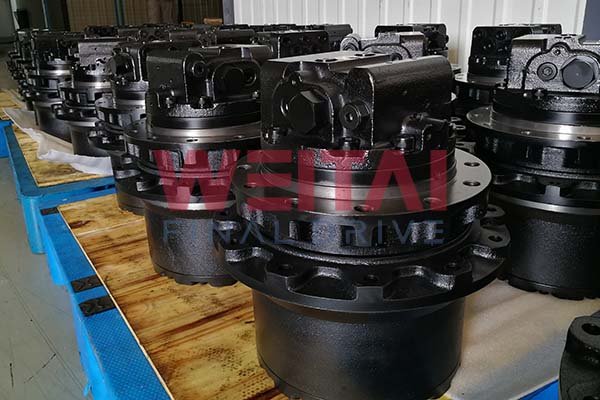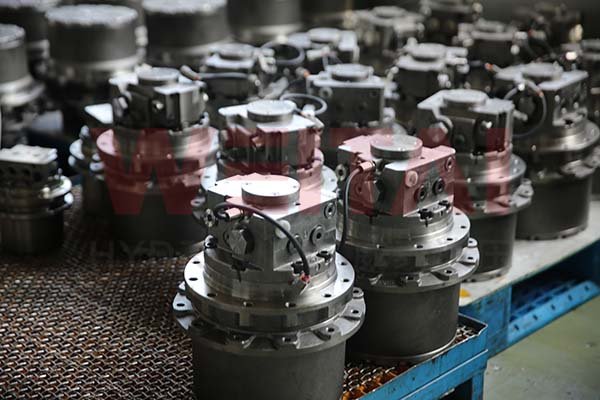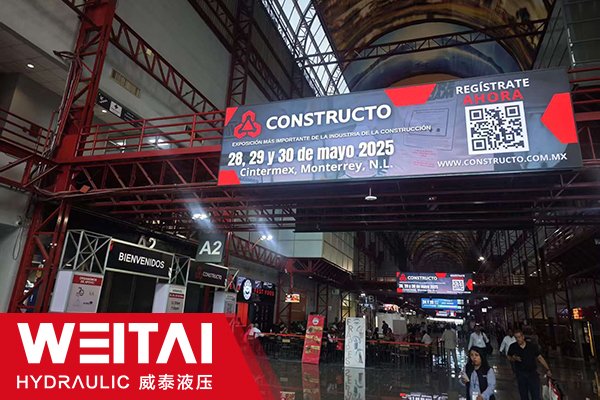Travel motors play a crucial role in heavy machinery, such as excavators, skid steer loaders, and bulldozers, allowing these machines to move with power and precision. Like any mechanical component, travel motors can experience wear and tear over time, leading to operational issues. Understanding the common problems and how to troubleshoot them can help extend the life of your equipment and reduce costly downtime. In this article, we’ll explore some of the most frequent travel motor issues and provide actionable troubleshooting tips.

1. Slow Travel Speed
One of the most common complaints with travel motors is reduced travel speed. This issue can impact productivity, making it crucial to diagnose the root cause promptly.
Causes:
- Low hydraulic fluid levels: Insufficient hydraulic fluid reduces the pressure needed to operate the motor efficiently.
- Hydraulic fluid contamination: Debris in the fluid can clog filters and restrict flow to the motor.
- Worn or damaged seals: These can cause hydraulic fluid leaks, leading to a loss of pressure and slower motor performance.
Troubleshooting Tips:
- Check hydraulic fluid levels regularly and refill if needed.
- Inspect hydraulic fluid for contamination, and replace it if you notice debris or discoloration.
- Examine the motor seals for wear or damage, and replace them if necessary.
2. Excessive Noise of a Travel Motor
A well-functioning travel motor should operate with minimal noise. If you start hearing grinding, clunking, or high-pitched whining sounds, it could indicate an internal problem.
Causes:
- Bearing failure: Worn-out bearings can create loud grinding or rumbling noises.
- Cavitation: Air bubbles in the hydraulic fluid can collapse, causing noise and potential damage to the motor.
- Loose components: Bolts or fasteners that have become loose can lead to rattling sounds during operation.
Troubleshooting Tips:
- Check bearings for wear or damage and replace them if needed.
- Bleed the hydraulic system to remove air and prevent cavitation.
- Tighten any loose bolts or fasteners to eliminate rattling noises.
3. Travel Motor Overheating
Overheating is another issue that can affect the performance and lifespan of a travel motor. High temperatures can damage internal components, leading to costly repairs.
Causes:
- Inadequate cooling: A malfunctioning cooling system can fail to dissipate heat, causing the motor to overheat.
- Excessive load: Overloading the machine or operating it in harsh conditions can cause the motor to work harder and overheat.
- Clogged filters: Dirty or clogged filters can restrict fluid flow, increasing friction and heat inside the motor.
Troubleshooting Tips:
- Inspect the cooling system for any malfunctions, such as blocked radiators or faulty fans.
- Operate the machine within its load limits, avoiding excessive strain on the motor.
- Replace or clean clogged hydraulic filters to ensure proper fluid circulation.
4. Travel Motor Leaks
Leaks in the travel motor are not only messy but can also lead to reduced performance and even complete failure if left unchecked.
Causes:
- Damaged seals: Worn or torn seals are a common source of hydraulic fluid leaks.
- Cracked housing: Physical damage to the motor housing can lead to leaks.
- Loose connections: Hoses and fittings that are not properly secured can result in fluid leakage.
Troubleshooting Tips:
- Inspect the seals and gaskets for any visible damage and replace them as necessary.
- Check the motor housing for cracks or wear, and address any damage.
- Tighten loose connections or replace damaged hoses and fittings to prevent leaks.
5. Lack of Power or Complete Failure
If your travel motor lacks power or fails to operate entirely, it’s a clear sign of an underlying issue that needs immediate attention.
Causes:
- Hydraulic pump failure: A malfunctioning hydraulic pump can prevent the motor from receiving the required fluid pressure.
- Blocked lines or filters: Blockages in the hydraulic system can restrict the flow of fluid to the motor, resulting in poor performance.
- Internal motor damage: Worn gears, broken components, or other internal damage can cause a complete loss of power.
Troubleshooting Tips:
- Test the hydraulic pump to ensure it’s working properly and delivering adequate pressure to the motor.
- Inspect hydraulic lines and filters for blockages and clean or replace them as needed.
- Disassemble and inspect the motor if necessary, looking for worn gears or broken components that may need replacement.
Final Thoughts
Travel motor issues can lead to significant downtime if not addressed promptly, but regular maintenance and troubleshooting can keep your equipment in peak condition. By recognizing the common problems, such as slow travel speed, excessive noise, overheating, leaks, and power loss, and knowing how to troubleshoot them, you can minimize disruptions and extend the lifespan of your travel motor.
Proper care and attention to your travel motor will ensure your machinery continues to operate smoothly, providing the power and mobility needed for your projects.



